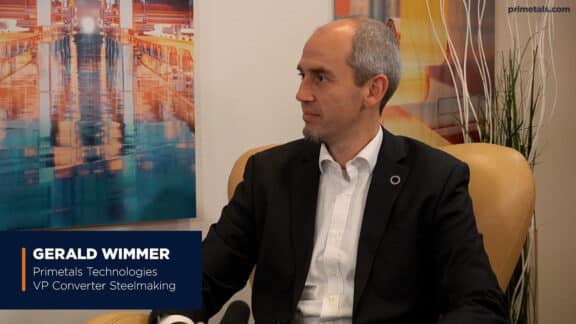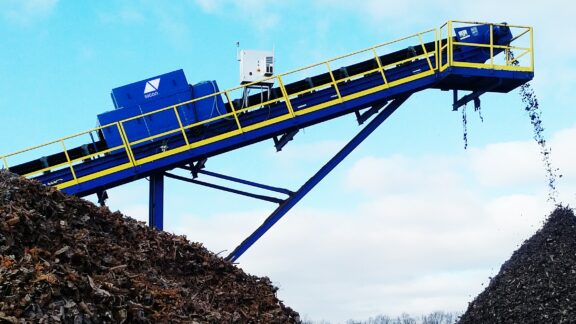Increased use of scrap is only as valuable to steel producers as the quality of the scrap itself. To reliably produce high-grade steel, scrap must be processed, cleaned, and sorted. Recognizing the value of scrap for producers in decarbonization efforts and seeing room for improvement, Primetals Technologies sets a new standard for scrap quality with “crafted scrap.”
Along with electric steelmaking, scrap use has become a growing trend in the steel industry. While always making up a part of steelmaking, until now, scrap rates have been limited. However, with the ability to process charges of 100 percent scrap, electric arc furnaces are placing additional pressure on an already limited scrap market. Yet, for electric steelmaking, scrap presents a series of challenges regarding yield and quality. Today, scrap use generally comes with several challenges, but “crafted scrap” is ready to change the world of scrap-based steelmaking.
The Challenges of Scrap
If one were to ask steel producers today to reliably report on the number of contaminants, residual materials, and metals in their scrap, the answer would vary greatly. Today, scrap represents a valuable but often unreliable input material for melting units in steelmaking. Based on small sample tests or visual checks, steel producers rely on scrap suppliers and experienced operators to identify and categorize their scrap at the scrap yard. Additionally, there are no internationally agreed upon regulations regarding the number of contaminants in scrap and regulations can vary dramatically between suppliers. Thus, producers must operate using scrap on a “worst-case-scenario” basis.
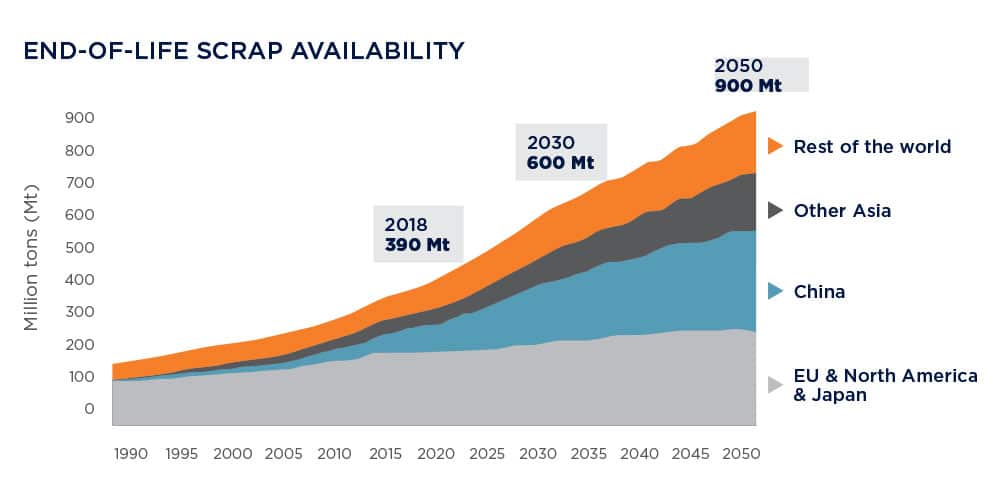
As scrap quality is undoubtedly a challenge for steel producers, the amount of scrap available is also problematic. Although specialists anticipate an increase in scrap worldwide, the amount of high-quality scrap will also decrease. The reason for this is two-fold. As electric steelmaking increases worldwide, scrap previously exported from certain regions will be processed and recycled domestically. This shift in scrap reuse will also mean that scrap will be recycled more often. Without optimizing the status of scrap processing, the number of contaminants and the quality of steel available as scrap will worsen over time. Thankfully, experts at Primetals Technologies are optimizing scrap processing by partnering with industry leaders like SICON.
Crafting the Future
Crafted scrap is the future of scrap-based steelmaking and will transform how producers manage and maintain their scrap yards. Crafted scrap is the end product and name for a comprehensive set of technologies making up a scrap preparation system. This system consists of hardware and software solutions, allowing the meltshop to control the scrap recipes sent to the melting unit, whether in converter or electric steelmaking, and even in the blast furnace. The benefit of this system is a centralized and controlled preparation of scrap that focuses on identifying the types of scrap being sent to the meltshop to ensure the appropriate scrap mix.
The system delivers exceptionally clean scrap by removing 99 percent of impurities.
Getting Sorted
An integral part of crafted scrap is using scrap cleaning, pre-processing, processing, and sorting technologies from the cooperative partner of Primetals Technologies, SICON. SICON offers a range of products and expertise specializing in the sorting and cleaning of scrap. The EcoScan online is a robust solution for identifying and tracking scrap in the scrap yard, providing constant X-Ray analysis and connecting the scrap yard to an intelligent database for assessing scrap. Combined with solutions for sheared and shredded scrap, which utilize magnetic separation, air sifting, and automated sorting, their systems deliver exceptionally clean scrap by removing more than 99 percent of impurities and reducing copper content.
Where the EcoScan online aids with sorting scrap in the scrap yard, cameras and sensors from Primetals Technologies analyze and manage scrap set to be charged to the melting unit. Whether in a basket destined for the electric arc furnace or scrap chute destined for the converter, these solutions log and assess the exact scrap mixture tuned to the recipe required by the meltshop. The data is stored and utilized to ensure that the scrap is accurate within the chute. The scrap is then tracked and reassessed after loading to ensure it arrives at the appropriate melting unit. Once a camera detects a scrap chute, it will provide feedback recording the percentage and type of scrap within the chute and initiate a three-dimensional scan to assess the volume of scrap in the chute. This series of sensors, cameras, and trackers make up a system of checks to guarantee that the appropriate scrap arrives at the desired location.
Scrap regulations worldwide are diverse. They consist of varying qualifications and various standards. Common scrap types are heavy melting scrap or HMS 1 and 2. Consisting of iron and steel at the end of their lifetime, both HMS 1 and HMS 2 have various codes, according to the North American Institute of Scrap Recycling Industries. Regardless of their categorization, end-of-life steel often contains “tramp elements”—i.e., elements that cannot be extracted from molten steel. The most challenging elements are copper, tin, nickel, and molybdenum. The impact of these tramp elements on steel quality varies but has been known to lessen the quality of different steel grades. From controlling microstructures to steel properties, such as tensile strength, elongation, yield point, soundness in the welding area, and fracture toughness, have all been reviewed in terms of the impact of these elements. For copper, surface hot-shortness—i.e., cracking of the material’s surface—is particularly concerning. Copper also limits the types of steel products to those with a higher tolerance—e.g., reinforcing bars.
Digital Foundation
At the heart of crafted scrap is the process optimization system from Primetals Technologies that integrates first and foremost with the production planning system, which controls the production plan, including the desired steel grades. A recipe is then pulled from a metallurgical database, including the type and amount of scrap required from the scrap yard. The scrap yard management system will update the optimization system with the latest scrap supply, including various scrap grades. Different rules are applied to the scrap yard and processing steps, including cutting, pre-shredding, shredding, cleaning, chemical analysis, and bailing based on the melting unit, converter, or electric arc furnace. Once completed, the scrap is charged to the melting unit, and the available stock at the scrap yard will also be updated.
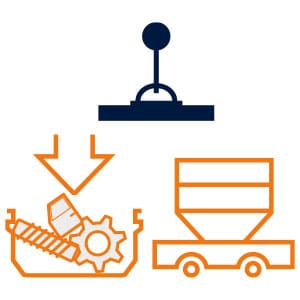
Scrap yard simulation
Optimize charging material flow

Scrap type monitor
Classification of scrap types

Scrap mover
Autonomous scrap transport (battery driven)

Scrap analyzer
EcoScan

Scrap delivery supervisor
Automatic guided delivery management

Scrap cleaning
HSM cleaning, Scrap Tuning

Scrap profile monitor
3D measurement of volume and pro
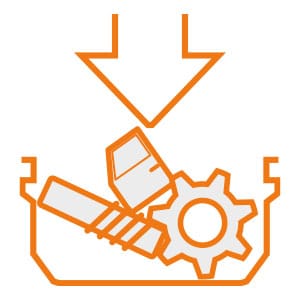
Scrap loading controller + tracker
Automation support for scrap baskets and chutes

Scrap composition monitor
Identification of unwanted and hazardous substances
Fully Optimized and Fully Automated
The future of scrap-based steelmaking will be determined by optimized and efficient scrap processing capabilities applied to scrap yards worldwide. By increasing the quality of scrap delivered to melting units, scrap-based electric steelmaking could achieve higher steel grades than currently possible due to contaminants and impurities. The cleaning and sorting of scrap also saves steel producers valuable time, energy, and costs, as improved scrap quality means an increase in yield and a decrease in slag and CO2 emissions. By integrating digital and automation systems into their scrap yards, steel producers can track, manage, and maintain highly efficient use of scrap with exceptionally high scrap rates decarbonizing and benefiting their production process.
MORE INFORAMTION
Learn more about crafted scrap here.

